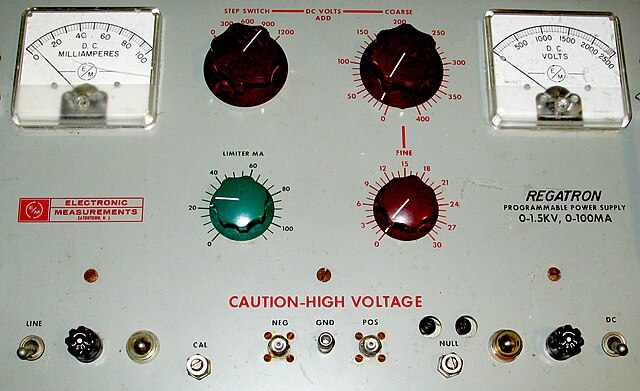Standard Commands for Programmable Instruments
The Standard Commands for Programmable Instruments defines a standard for syntax and commands to use in controlling programmable test and measurement devices, such as automatic test equipment and electronic test equipment.
Rear-panel of Tektronix TDS210 digital oscilloscope showing RS-232 (DE9) and IEEE-488 connectors that accept remote SCPI commands.
Rear-panel of Rigol DS1074Z digital oscilloscope showing USB-B and Ethernet (RJ45) connectors that accept remote SCPI commands.
A power supply is an electrical device that supplies electric power to an electrical load. The main purpose of a power supply is to convert electric current from a source to the correct voltage, current, and frequency to power the load. As a result, power supplies are sometimes referred to as electric power converters. Some power supplies are separate standalone pieces of equipment, while others are built into the load appliances that they power. Examples of the latter include power supplies found in desktop computers and consumer electronics devices. Other functions that power supplies may perform include limiting the current drawn by the load to safe levels, shutting off the current in the event of an electrical fault, power conditioning to prevent electronic noise or voltage surges on the input from reaching the load, power-factor correction, and storing energy so it can continue to power the load in the event of a temporary interruption in the source power.

A simple general-purpose desktop power supply used in electronic labs, with power output connector seen at lower-left and power input connector (not shown) located at the rear
Interior of high-end linear power supply with toroidal mains transformer.
A rackmount, adjustable regulated DC power supply
Electronic bench power supply unit with "banana connector" output






